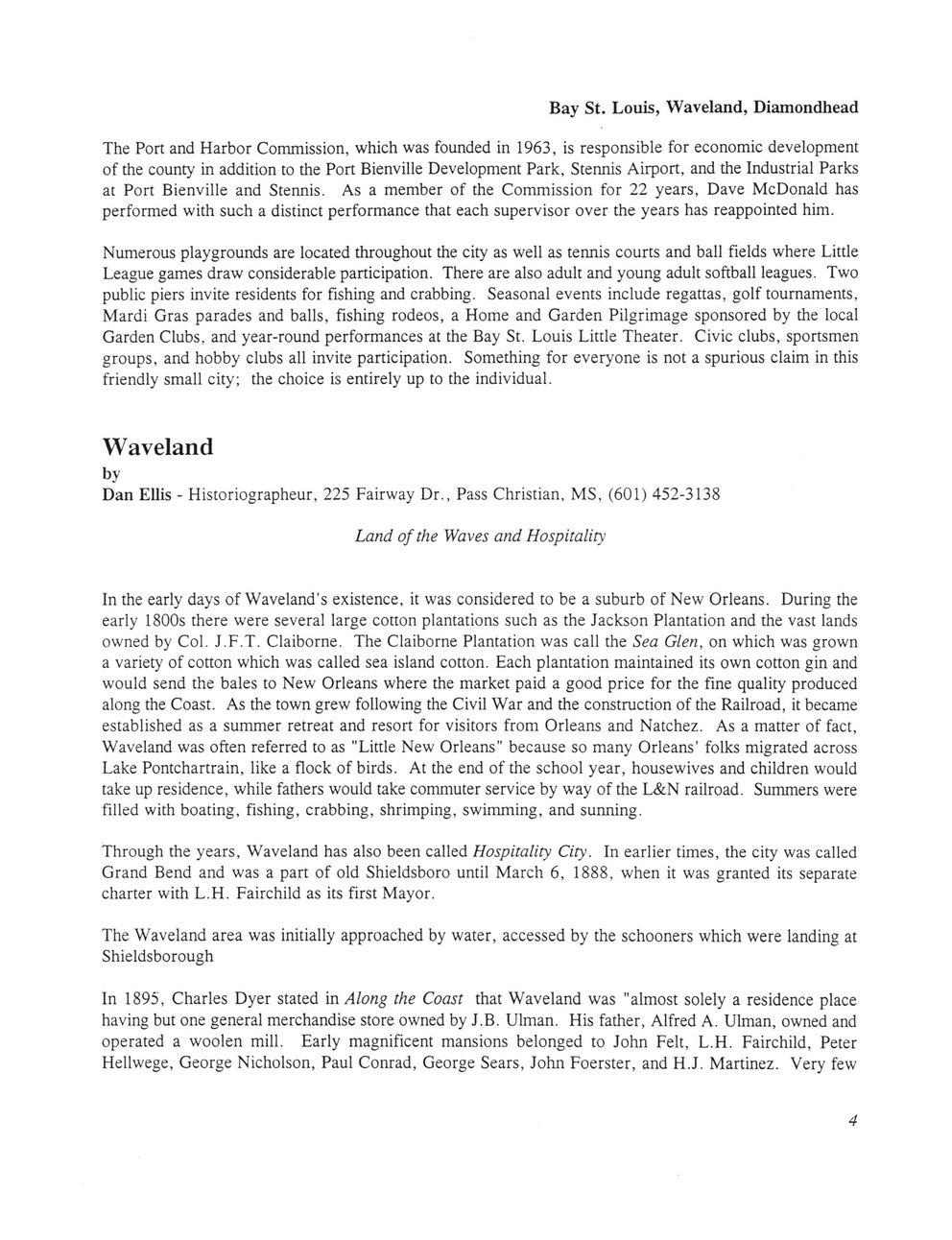This text was obtained via automated optical character recognition.
It has not been edited and may therefore contain several errors.
Bay St. Louis, Waveland, Diamondhead The Port and Harbor Commission, which was founded in 1963, is responsible for economic development of the county in addition to the Port Bienville Development Park, Stennis Airport, and the Industrial Parks at Port Bienville and Stennis. As a member of the Commission for 22 years, Dave McDonald has performed with such a distinct performance that each supervisor over the years has reappointed him. Numerous playgrounds are located throughout the city as well as tennis courts and ball fields where Little League games draw considerable participation. There are also adult and young adult softball leagues. Two public piers invite residents for fishing and crabbing. Seasonal events include regattas, golf tournaments, Mardi Gras parades and balls, fishing rodeos, a Home and Garden Pilgrimage sponsored by the local Garden Clubs, and year-round performances at the Bay St. Louis Little Theater. Civic clubs, sportsmen groups, and hobby clubs all invite participation. Something for everyone is not a spurious claim in this friendly small city; the choice is entirely up to the individual. Waveland by Dan Ellis - Historiographeur, 225 Fairway Dr., Pass Christian, MS, (601) 452-3138 Land of the Waves and Hospitality In the early days of Waveland's existence, it was considered to be a suburb of New Orleans. During the early 1800s there were several large cotton plantations such as the Jackson Plantation and the vast lands owned by Col. J.F.T. Claiborne. The Claiborne Plantation was call the Sea Glen, on which was grown a variety of cotton which was called sea island cotton. Each plantation maintained its own cotton gin and would send the bales to New Orleans where the market paid a good price for the fine quality produced along the Coast. As the town grew following the Civil War and the construction of the Railroad, it became established as a summer retreat and resort for visitors from Orleans and Natchez. As a matter of fact, Waveland was often referred to as "Little New Orleans" because so many Orleans' folks migrated across Lake Pontchartrain, like a flock of birds. At the end of the school year, housewives and children would take up residence, while fathers would take commuter service by way of the L&N railroad. Summers were filled with boating, fishing, crabbing, shrimping, swimming, and sunning. Through the years, Waveland has also been called Hospitality City. In earlier times, the city was called Grand Bend and was a part of old Shieldsboro until March 6, 1888, when it was granted its separate charter with L.H. Fairchild as its first Mayor. The Waveland area was initially approached by water, accessed by the schooners which were landing at Shieldsborough In 1895, Charles Dyer stated in Along the Coast that Waveland was "almost solely a residence place having but one general merchandise store owned by J.B. Ulman. His father, Alfred A. Ulman, owned and operated a woolen mill. Early magnificent mansions belonged to John Felt, L.H. Fairchild, Peter Hellwege, George Nicholson, Paul Conrad, George Sears, John Foerster, and H.J. Martinez. Very few 4

Ellis, Dan 004